Research on the Modeling, Control, and Calibration Technology of a Tracked Vehicle Load Simulation Test Bench
Abstract
Featured Application
Abstract
1. Introduction
2. Principle and Modeling
2.1. Dynamic Model of a Tracked Vehicle
2.2. Equivalent Inertia Modeling of Tracked Vehicles
3. Control Strategy
4. Calibration of Electrical Inertia Simulation Accuracy
4.1. Calibration of Standard Inertia
4.2. Calibration of Basic Inertia
4.3. Calibration of Electrical Inertia
4.4. Calibration of Electrical Inertia Response Time
5. Vehicle Tests
5.1. Correction of the Test Bed
5.2. Load Test and Shift Performance Test
5.3. Longitudinal Slope Passability Test
5.4. Acceleration Test
6. Conclusions
Author Contributions
Funding
Acknowledgments
Conflicts of Interest
Nomenclature
| Vehicle forward projection area | |
| Wind resistance coefficient | |
| d | Perturbation of system |
| Centroid height | |
| Inertia to be simulated by motor | |
| Inertia of supporting roller rotating around axle center | |
| Basic inertia | |
| Load wheel rotation inertia around axle center | |
| Driving wheel rotation inertia around axle center | |
| Induced wheel rotation around axle center Inertia | |
| Vehicle equivalent inertia | |
| Vehicle body equivalent inertia | |
| Track equivalent inertia | |
| Other equivalent inertia | |
| Inertia of flywheel box | |
, | Equivalent inertia of upper, lower, front, and rear parts of track |
| Relative horizontal distance between centroid and geometric center | |
| m | Mass of whole vehicle |
| Vehicle mass (excluding track) | |
| Mass of track | |
, | Mass of upper, lower, front, and rear parts of track |
| Number of load wheels | |
| Number of supporting rollers | |
| R | Effective radius of driving wheel |
| Inner radius of load wheel | |
| Outer radius of load wheel | |
| s | Up (or down) slope distance |
| ti | Response time |
| Sampling frequency(s) | |
| T | Road resistance moment |
| Driving torque in calibration | |
| Vehicle inertia torque | |
| Resistance in calibration | |
| Vehicle driving torque | |
| Ground resistance torque | |
| Slope resistance torque | |
| Wind resistance torque | |
| Vehicle speed | |
| Track speed | |
| Absolute speed of the upper, lower, front, and rear parts of the track | |
, | Traction velocity of the upper, lower, front, rear, front, and rear parts of the track |
, | Relative velocity of upper, lower, front, and rear parts of the track to driving wheel |
| Angular acceleration of vehicle output axle | |
| Measured acceleration | |
| Target acceleration | |
| Angular acceleration | |
| Vehicle inclination | |
| Slope angle | |
| Target speed of driving wheel | |
| Measured speed of load simulation system | |
| Load wheel angular speed | |
| Driving wheel angular speed | |
| Angular speed of induced wheel | |
| Angular velocity of supporting roller | |
| Slip rate | |
| Sensor noise | |
| C(s) | Controller |
| G(s) | Transfer function of motor |
| Nominal transfer function of load simulation system | |
| J(s) | Transfer function of transmission mechanism |
| Filter | |
| Non-linear uncertainty |
References
- Wang, Z.; Lv, H.; Zhou, X.; Chen, Z.; Yang, Y. Design and Modeling of a Test Bench for Dual-Motor Electric Drive Tracked Vehicles Based on a Dynamic Load Emulation Method. Sensors 2018, 18, 1993. [Google Scholar] [CrossRef] [PubMed]
- Takeda, M.; Hosoyamada, Y.; Motoi, N.; Kawamura, A. Development of the experiment platform for electric vehicles by using motor test bench with the same environment as the actual vehicle. In Proceedings of the IEEE International Workshop on Advanced Motion Control, Yokohama, Japan, 14–16 March 2014; pp. 356–361. [Google Scholar]
- Hewson, C.R.; Sumner, M.; Asher, G.M.; Wheeler, P.W. Dynamic mechanical load emulation test facility to evaluate the performance of AC inverters. Power Eng. J. 2000, 14, 21–28. [Google Scholar] [CrossRef]
- Hewson, C.R.; Asher, G.M.; Sumner, M.; Wheeler, P.W. Dynamic mechanical load emulation test facility to evaluate the performance of AC inverters. In Proceedings of the 7th International Conference on Power Electronics and Variable Speed Drives, London, UK, 21–23 September 1998; pp. 206–211. [Google Scholar]
- Fu, W.X.; Sun, L.; Yu, Y.F.; Zhu, S.P.; Yan, J. Design and Model-building of Motor-driven Load Simulator with Large Torque Outputs. J. Syst. Simul. 2009, 21, 3596–3598. [Google Scholar]
- Yalla, S.K.; Kareem, A.; Asce, M. Dynamic Load Simulator: Actuation Strategies and Applications. J. Eng. Mech. 2007, 133, 855–863. [Google Scholar] [CrossRef]
- Tian, Y.; Jing, Z.; Wang, K.; Nie, S.; Lu, Q. Study on the Control of AC Dynamometer System for Hybrid Electrical Vehicle Test Bench; LTLGB 2012; Springer: Berlin/Heidelberg, Germany, 2013. [Google Scholar]
- Rodic, M.; Jezernik, K.; Trlep, M. Dynamic emulation of mechanical loads: An advanced approach. IEE Proc. Electr. Power Appl. 2006, 153, 159–166. [Google Scholar] [CrossRef]
- Fajri, P.; Ahmadi, R.; Ferdowsi, M. Test bench for emulating electric-drive vehicle systems using equivalent vehicle rotational inertia. In Proceedings of the IEEE Power & Energy Conference at Illinois, Champaign, IL, USA, 22–23 February 2013; pp. 83–87. [Google Scholar]
- Huh, K.; Kim, J.; Hong, D. Estimation of dynamic track tension utilizing a simplified tracked vehicle model. In Proceedings of the American Control Conference, Arlington, VA, USA, 25–27 June 2001. [Google Scholar]
- Kim, J.H.; Park, C.S.; Kim, S.G.; Kim, J.H. Hydraulic system design and vehicle dynamic modeling for the analysis and development of tire roller. Int. J. Control Autom. Syst. 2003, 1, 89–94. [Google Scholar]
- Hewson, C.R.; Asher, G.M. Dynamometer control for emulation of mechanical loads. In Proceedings of the IEEE Industry Applications Conference, St. Louis, MO, USA, 12–15 October 1998; pp. 1511–1518. [Google Scholar]
- Akpolat, Z.H.; Asher, G.M.; Clare, J.C. Experimental dynamometer emulation of nonlinear mechanical loads. Ind. Appl. IEEE Trans. 1999, 35, 1367–1373. [Google Scholar] [CrossRef]
- Akpolat, Z.H.; Asher, G.M.; Clare, J.C. Dynamic emulation of mechanical loads using a vector- controlled induction motor-generator set. Ind. Electron. IEEE Trans. 1999, 46, 370–379. [Google Scholar] [CrossRef]
- Rodic, M.; Jezernik, K.; Trlep, M. Use of dynamic emulation of mechanical loads in the testing of electrical vehicle driveline control algorithms. In Proceedings of the 2007 European Conference on Power Electronics and Applications, Aalborg, Denmark, 2–5 September 2007; pp. 1–10. [Google Scholar]
- Kyslan, K.; Rodič, M.; Suchý, Ľ.; Ferková, Ž.; Ďurovský, F. Industrial controller-based dynamometer with dynamic emulation of mechanical loads. Electr. Eng. 2017, 99, 1245–1254. [Google Scholar] [CrossRef]
- Kempf, C.J.; Kobayashi, S. Disturbance observer and feedforward design for a high-speed direct-drive positioning table. Control Syst. Technol. IEEE Trans. 1999, 7, 513–526. [Google Scholar] [CrossRef]
- Gao, Y.; Sun, B.; Lu, G. Modified function projective lag synchronization of chaotic systems with disturbance estimations. Appl. Math. Model. 2013, 37, 4993–5000. [Google Scholar] [CrossRef]
- Zhang, Z.; Wang, L.; Zhang, J.; Ma, R. Study on Requirements for Load Emulation of the Vehicle with an Electric Braking System. IEEE Trans. Veh. Technol. 2017, 11, 9638–9653. [Google Scholar] [CrossRef]
- Li, W.L.; Wang, J.J.; Zhang, X.K.; Yi, P. A novel road dynamic simulation approach for vehicle driveline experiments. Discret. Contin. Dyn. Syst. 2019, 12, 1035–1052. [Google Scholar] [CrossRef]
- Thompson, J.K.; Marks, A.; Rhode, D. Inertia Simulation in Brake Dynamometer Testing. In Proceedings of the SAE International, Brake Colloquium & Exhibition, Phoenix, AZ, USA, 6–9 October 2002. [Google Scholar]
- Chou, H.H.; Kung, Y.S.; Quynh, N.V.; Cheng, S. Optimized FPGA design, verification and implementation of a neuro-fuzzy controller for PMSM drives. Math. Comput. Simul. 2013, 90, 28–44. [Google Scholar] [CrossRef]
- Xing, Q.; Zhang, J.; Qian, M.; Jia, Z.; Sun, B. Design, calibration and error analysis of a piezoelectric thrust dynamometer for small thrust liquid pulsed rocket engines. Measurement 2011, 44, 338–344. [Google Scholar] [CrossRef]
- Chavan, V.V.; Diggory, P.J.; Ulbrecht, I.J. Influence of dynamometer calibration on the accuracy of power consumption measurements. Chem. Ing. Tech. 1975, 47, 74. [Google Scholar] [CrossRef]
- Meymand, S.Z.; Ahmadian, M. Design, Development, and calibration of a force-moment measurement system for wheel-rail contact mechanics in roller rigs. Measurement 2015, 81, 113–122. [Google Scholar] [CrossRef]
- Yong, Y.; Xiao-jun, Z.; Chen-long, Y.; Jin-qiu, M. Dynamic distribution method of multi-axle vehicle’s driving axle load on test bench. J. Zhejiang Univ. Eng. Sci. 2014, 48, 1080–1085. [Google Scholar]
- Nam, Y. Dynamic characteristic analysis and force loop design for the aerodynamic load simulator. J. Mech. Sci. Technol. 2012, 14, 1358–1364. [Google Scholar] [CrossRef]
- Chassin, F.S.; Mayhorn, E.T.; Elizondo, M.A.; Lu, S. Load modeling and calibration techniques for power system studies. In Proceedings of the 43th North American Power Symposium (NAPS), Boston, MA, USA, 4–6 August 2011. [Google Scholar]
- Hong, W.; Qiang, S.; Shengbo, W.; Pu, Z. Dynamic modeling and control strategy optimization for a hybrid electric tracked vehicle. Math. Probl. Eng. 2015, 2015, 1–12. [Google Scholar]
- Wang, H.; Sun, F.C. Dynamic Modeling and Simulation on a Hybrid Power System for Dual-Motor-Drive Electric Tracked Bulldozer. Appl. Mech. Mater. 2014, 494–495, 229–233. [Google Scholar] [CrossRef]
- Fajri, P.; Ahmadi, R.; Ferdowsi, M. Equivalent vehicle rotational inertia used for electric vehicle test bench dynamic studies. In Proceedings of the Conference on IEEE Industrial Electronics Society, Montreal, QC, Canada, 25–28 October 2012. [Google Scholar]
- Zou, Y.; Kong, Z.; Liu, T.; Liu, D. A Real-Time Markov Chain Driver Model for Tracked Vehicles and its Validation: Its Adaptability via Stochastic Dynamic Programming. IEEE Trans. Veh. Technol. 2016. [Google Scholar] [CrossRef]
- Fajri, P.; Lee, S.; Prabhala, V.A.K.; Ferdowsi, M. Modeling and Integration of Electric Vehicle Regenerative and Friction Braking for Motor/Dynamometer Test Bench Emulation. IEEE Trans. Veh. Technol. 2015, 65, 4264–4273. [Google Scholar] [CrossRef]
- Carriere, S.; Caux, S.; Fadel, M. Optimised speed control in state space for PMSM direct drives. IET Electr. Power Appl. 2010, 4, 158–168. [Google Scholar] [CrossRef]
- Cao, Y.Y.; Frank, P.M. Robust H disturbance attenuation for a class of uncertain discrete-time fuzzy systems. IEEE Trans. Fuzzy Syst. 2000, 8, 406–415. [Google Scholar]
- Kim, M.S.; Shin, J.H.; Hong, S.G.; Lee, J.J. Designing a robust adaptive dynamic controller for nonholonomic mobile robots under modeling uncertainty and disturbances. Mechatronics 2003, 13, 507–519. [Google Scholar] [CrossRef]
- Simon, D. Optimal State Estimation: Kalman, H Infinity, and Nonlinear Approaches; John Wiley & Sons: Hoboken, NJ, USA, 2006. [Google Scholar]
- Wang, Z.; Ho, D.W.C.; Liu, Y.; Xiaohui, L. Robust H∞ H∞ mathContainer Loading Mathjax, control for a class of nonlinear discrete time-delay stochastic systems with missing measurements. Automatica 2009, 45, 684–691. [Google Scholar] [CrossRef]
- Wang, T. Development and Calibration of an Item Response Model That Incorporates Response Time. Appl. Psychol. Meas. 2005, 29, 323–339. [Google Scholar] [CrossRef]
- Wood, J.D. Calibration, Stability, and Response Time for Salinity Sensors. Soil Sci. Soc. Am. J. 1978, 42, 248–250. [Google Scholar] [CrossRef]
- Vasilevskyi, O.M. Calibration method to assess the accuracy of measurement, devices using the theory of uncertainty. Int. J. Metrol. Qual. Eng. 2014, 5, 403. [Google Scholar] [CrossRef]


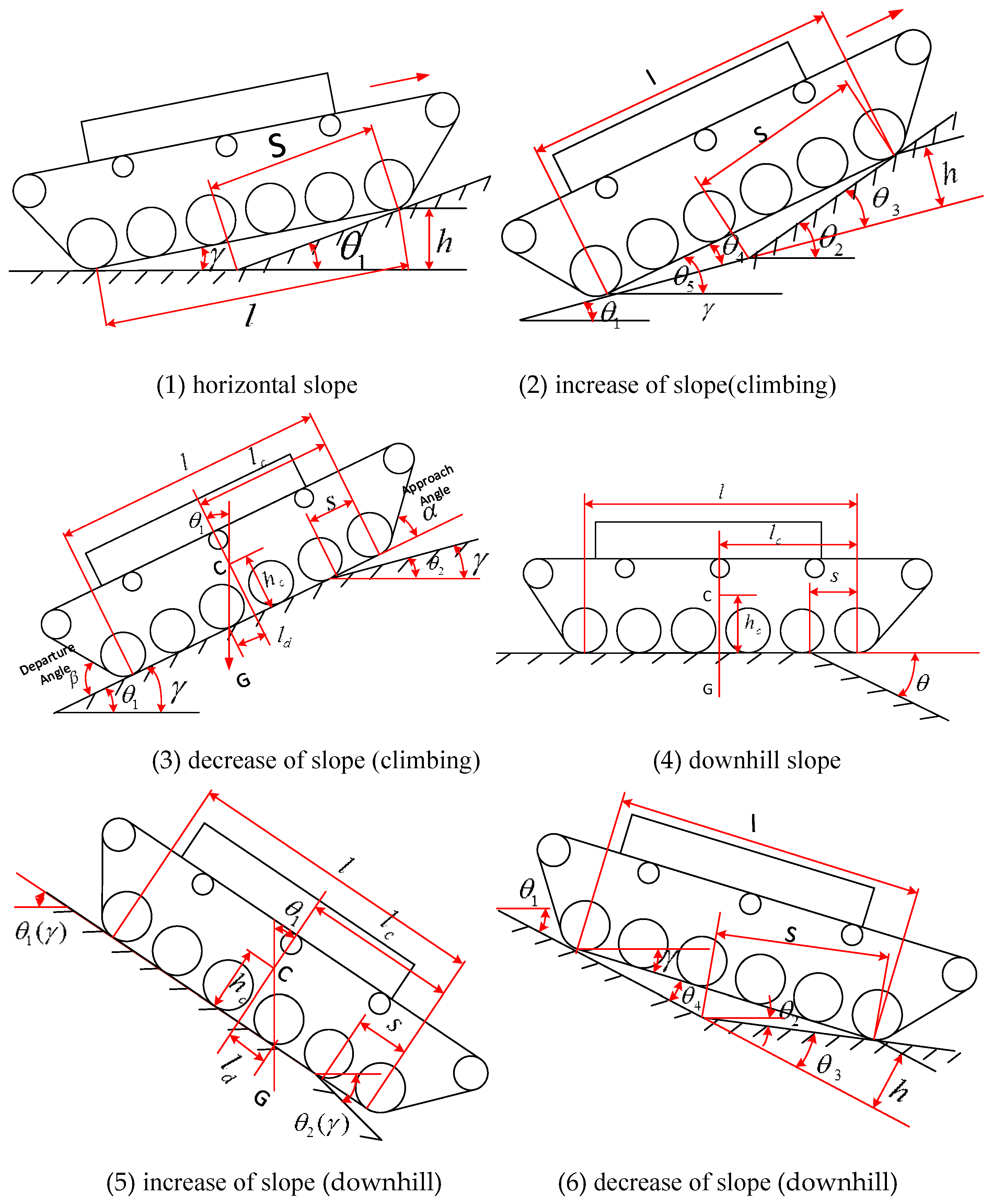

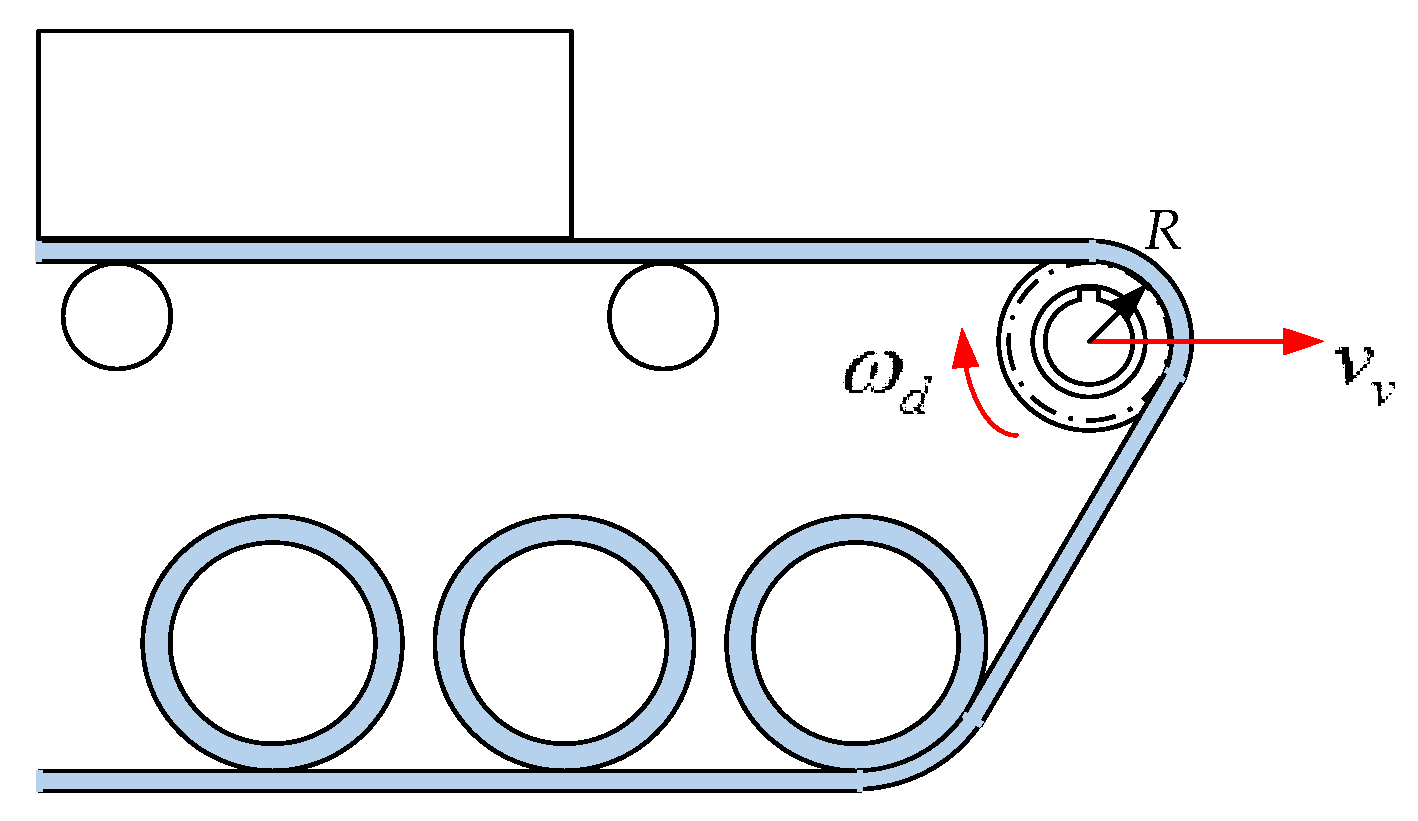





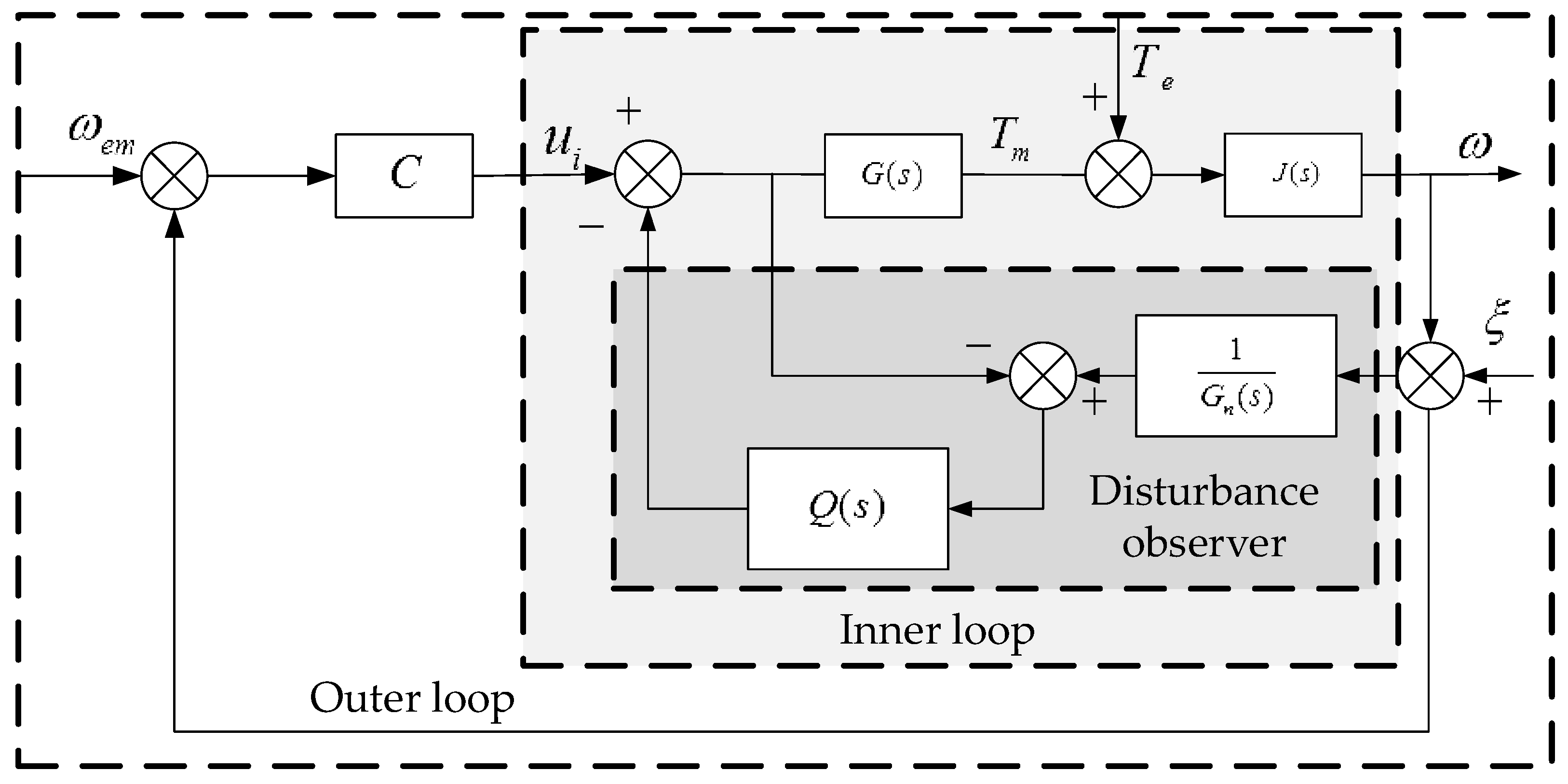
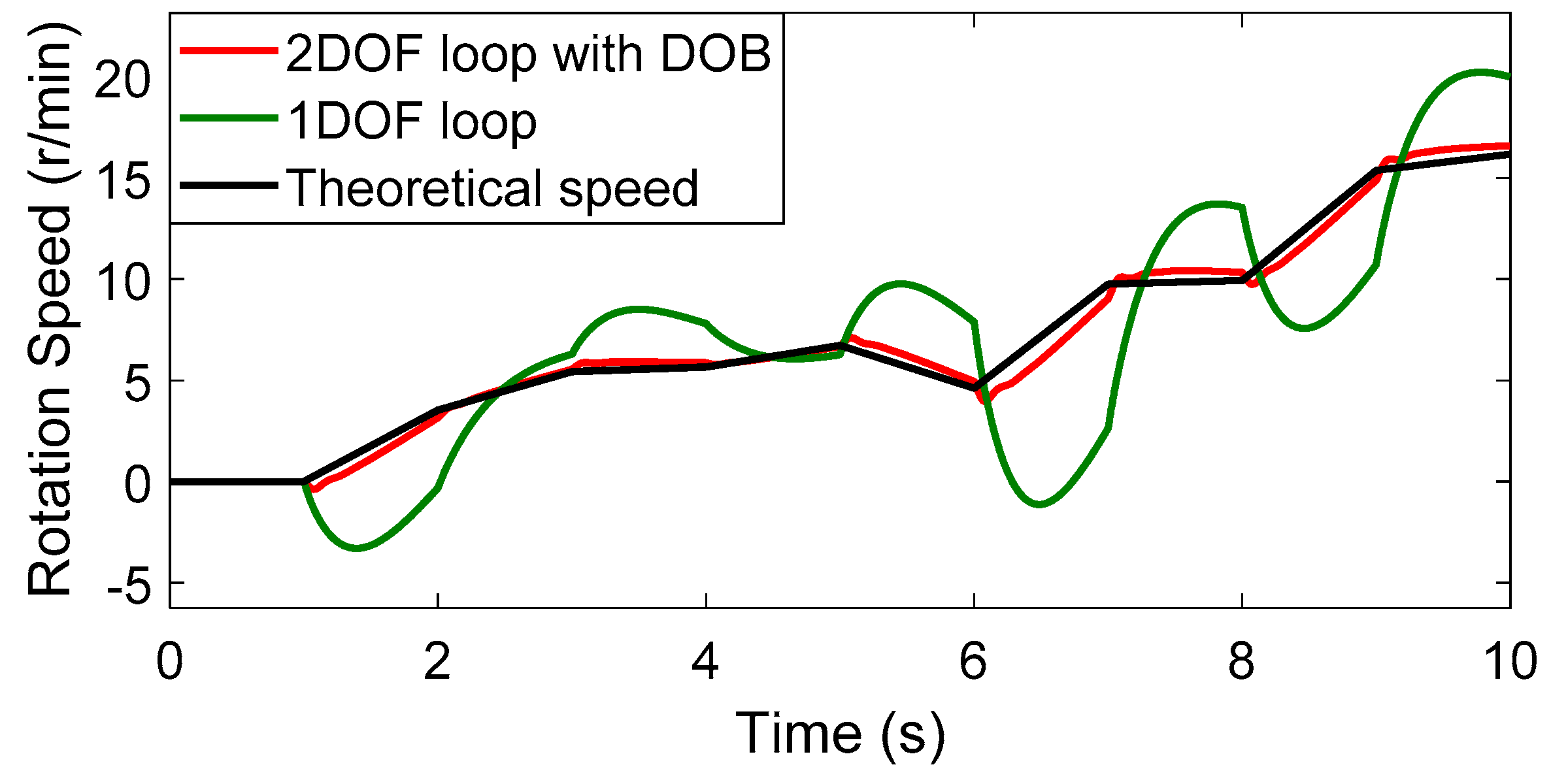


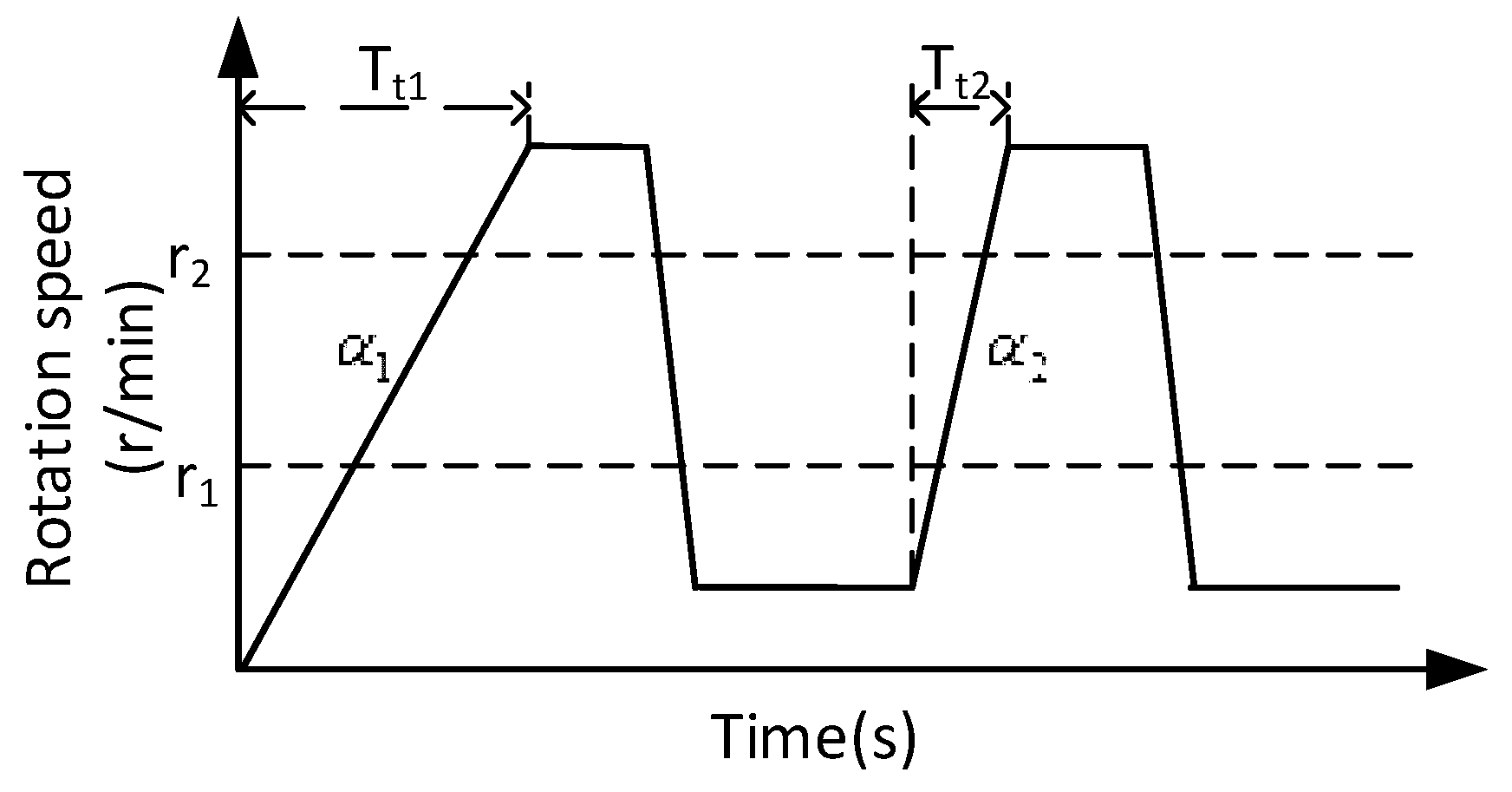

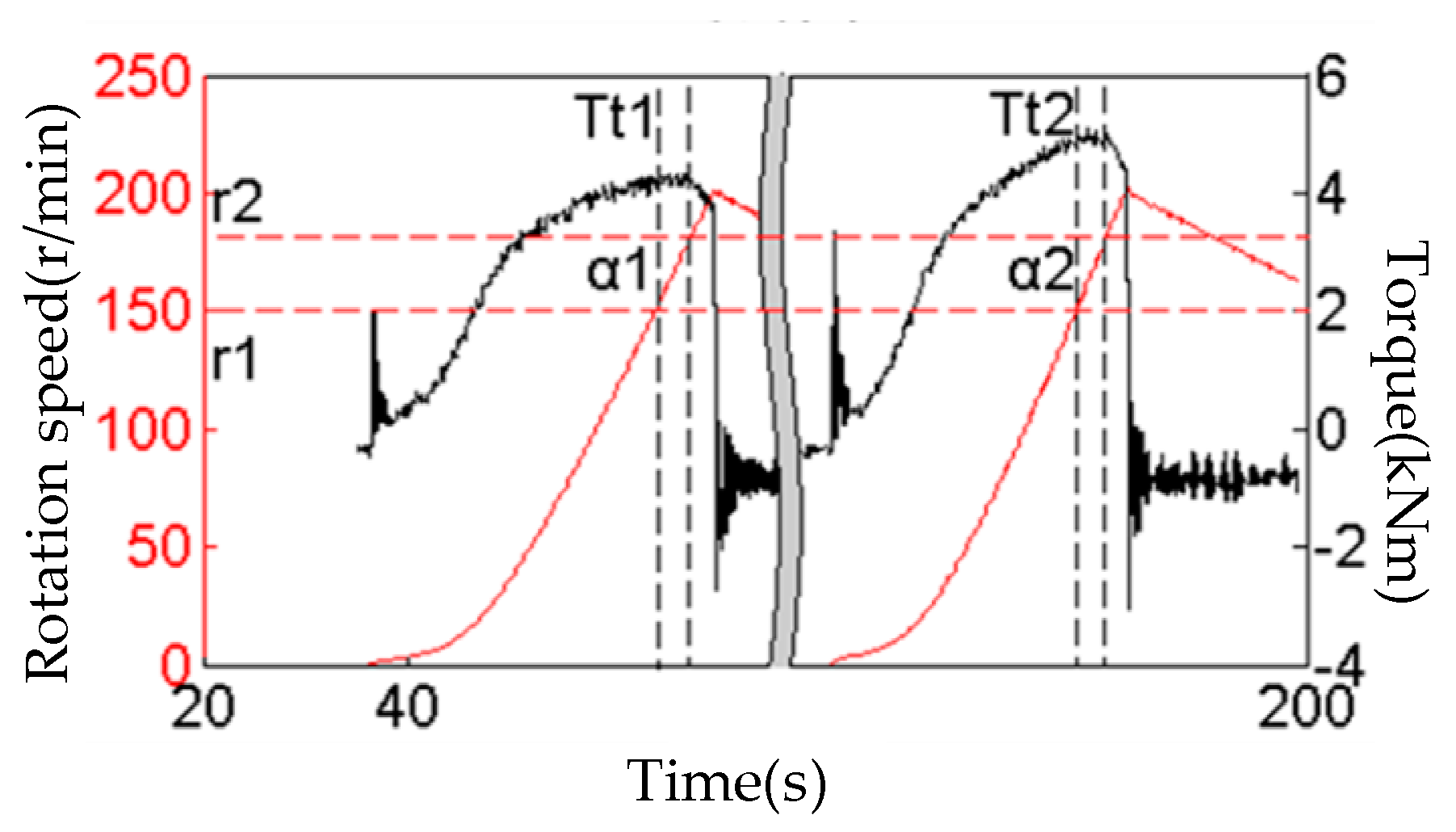
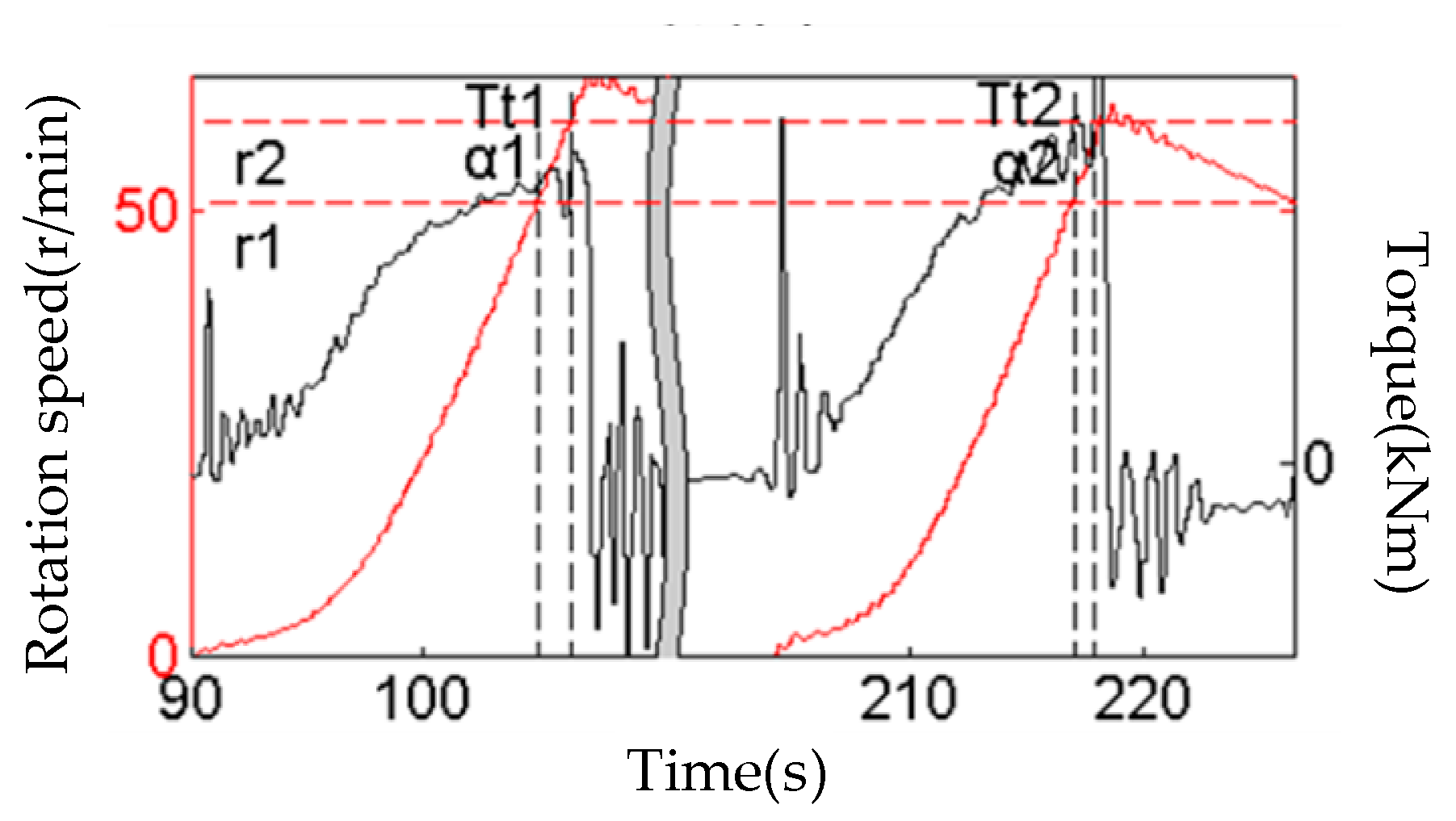

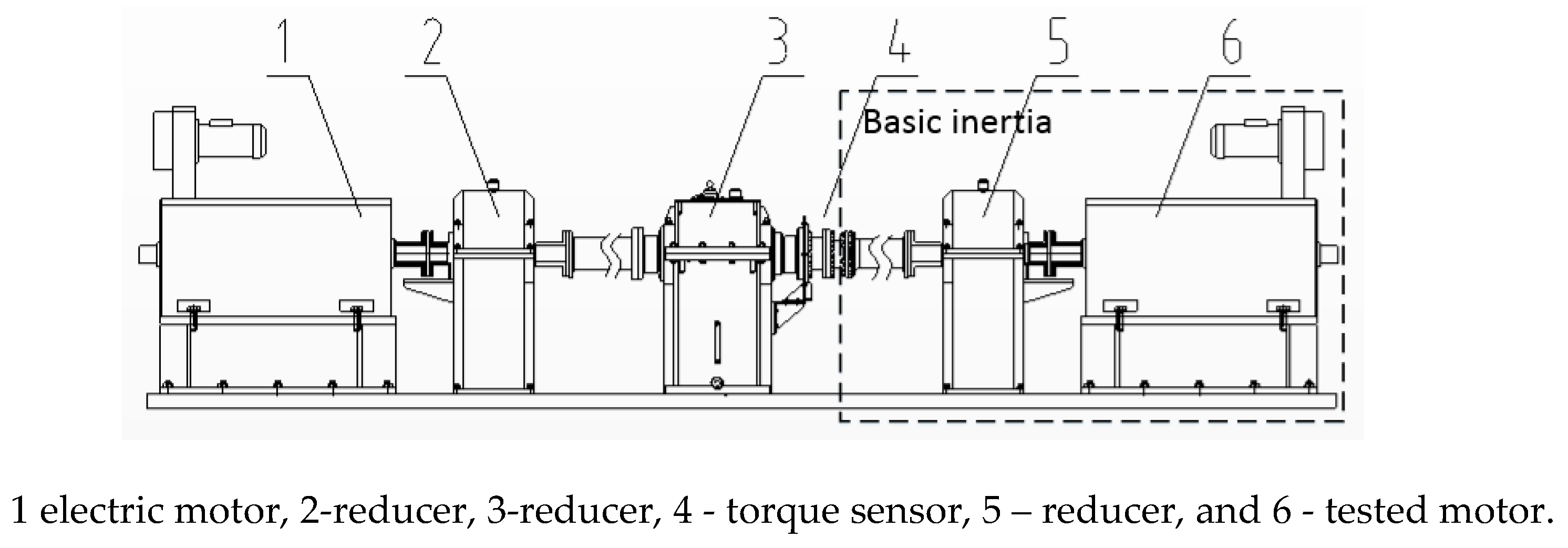



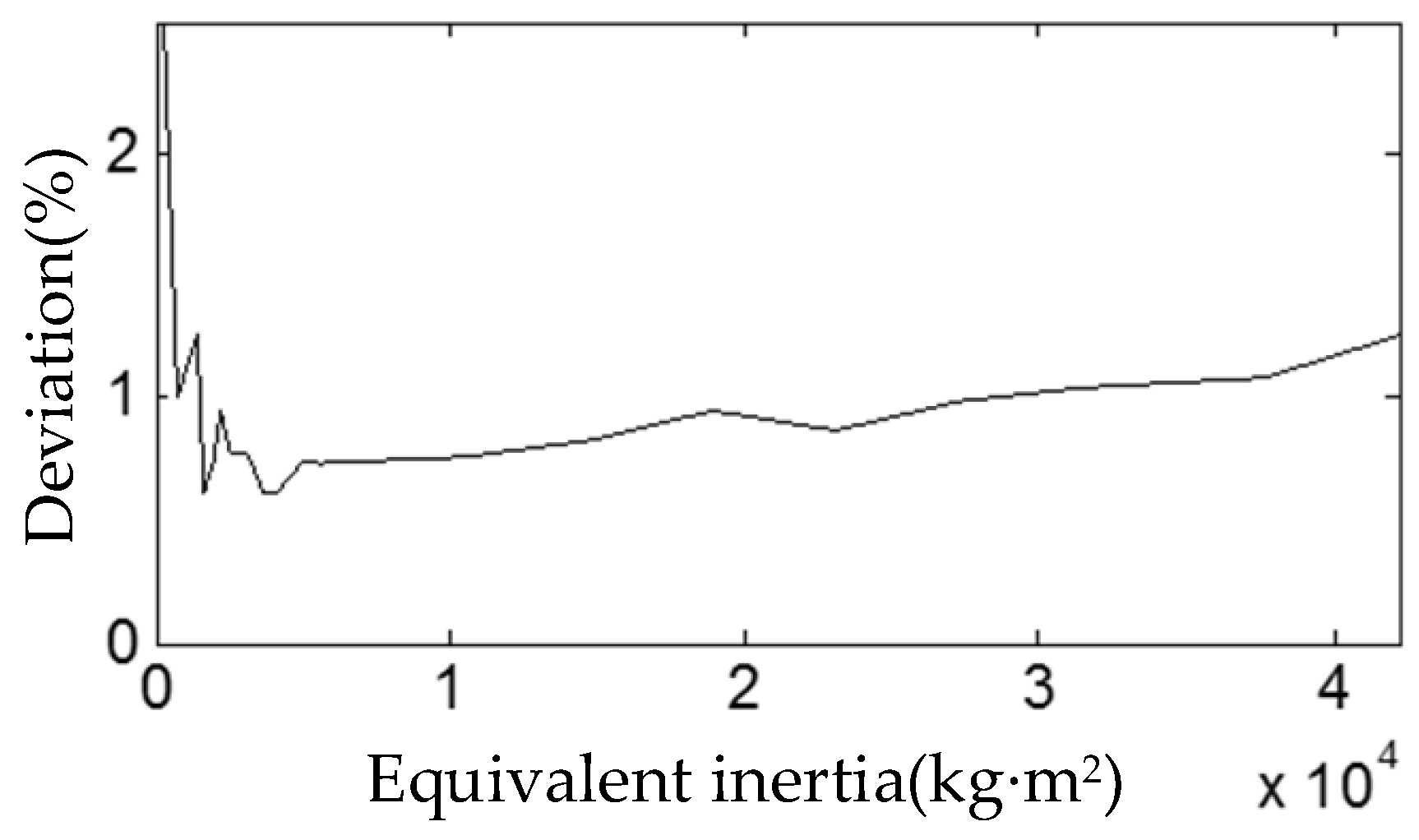
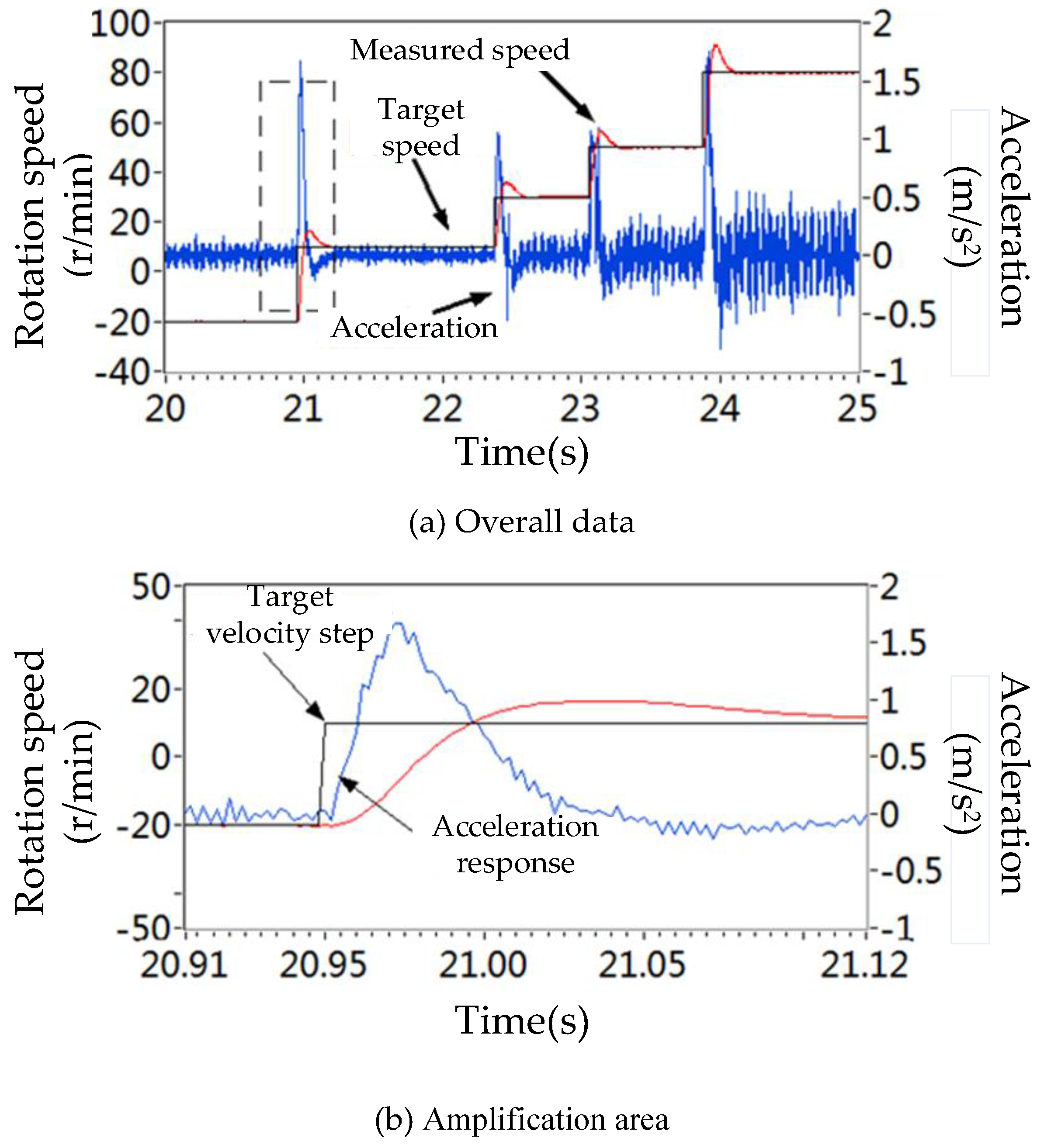
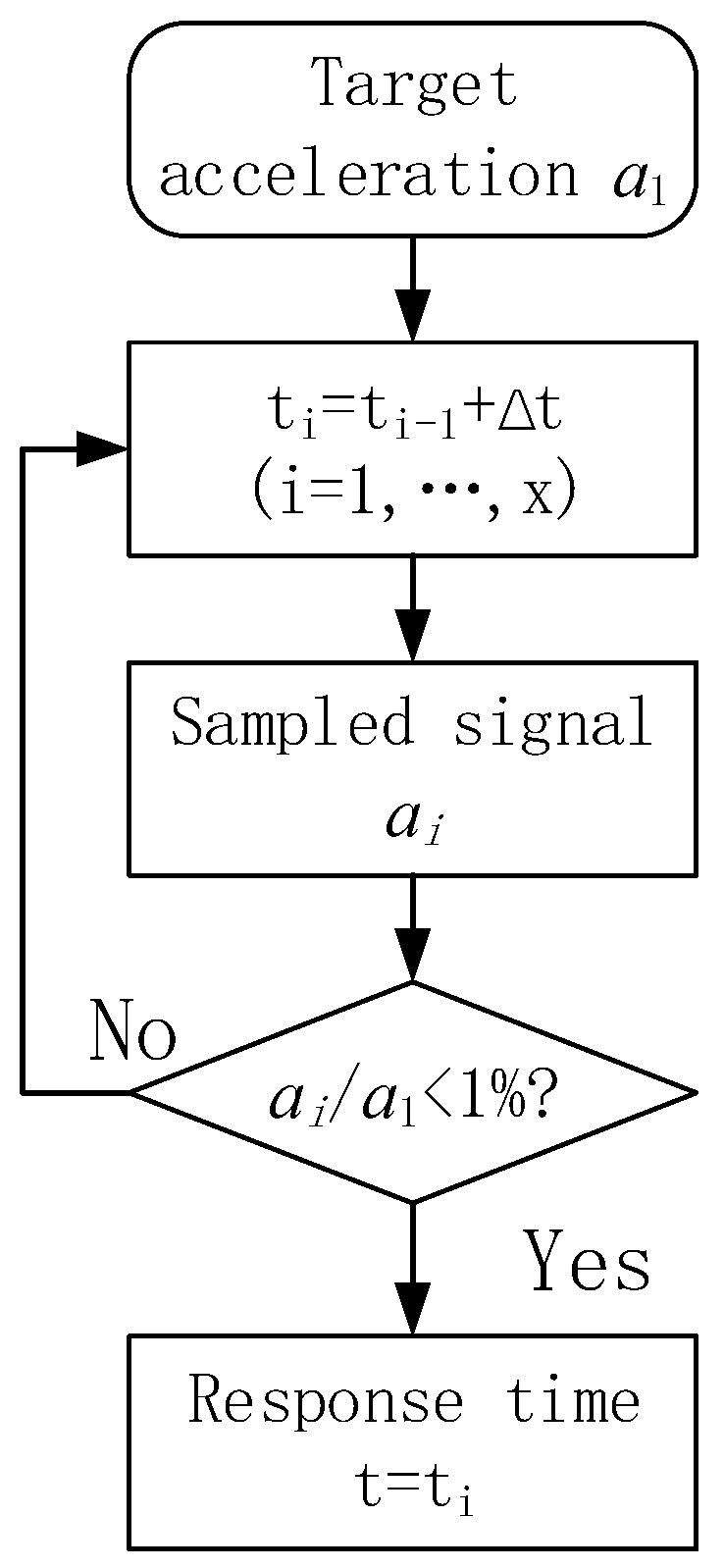
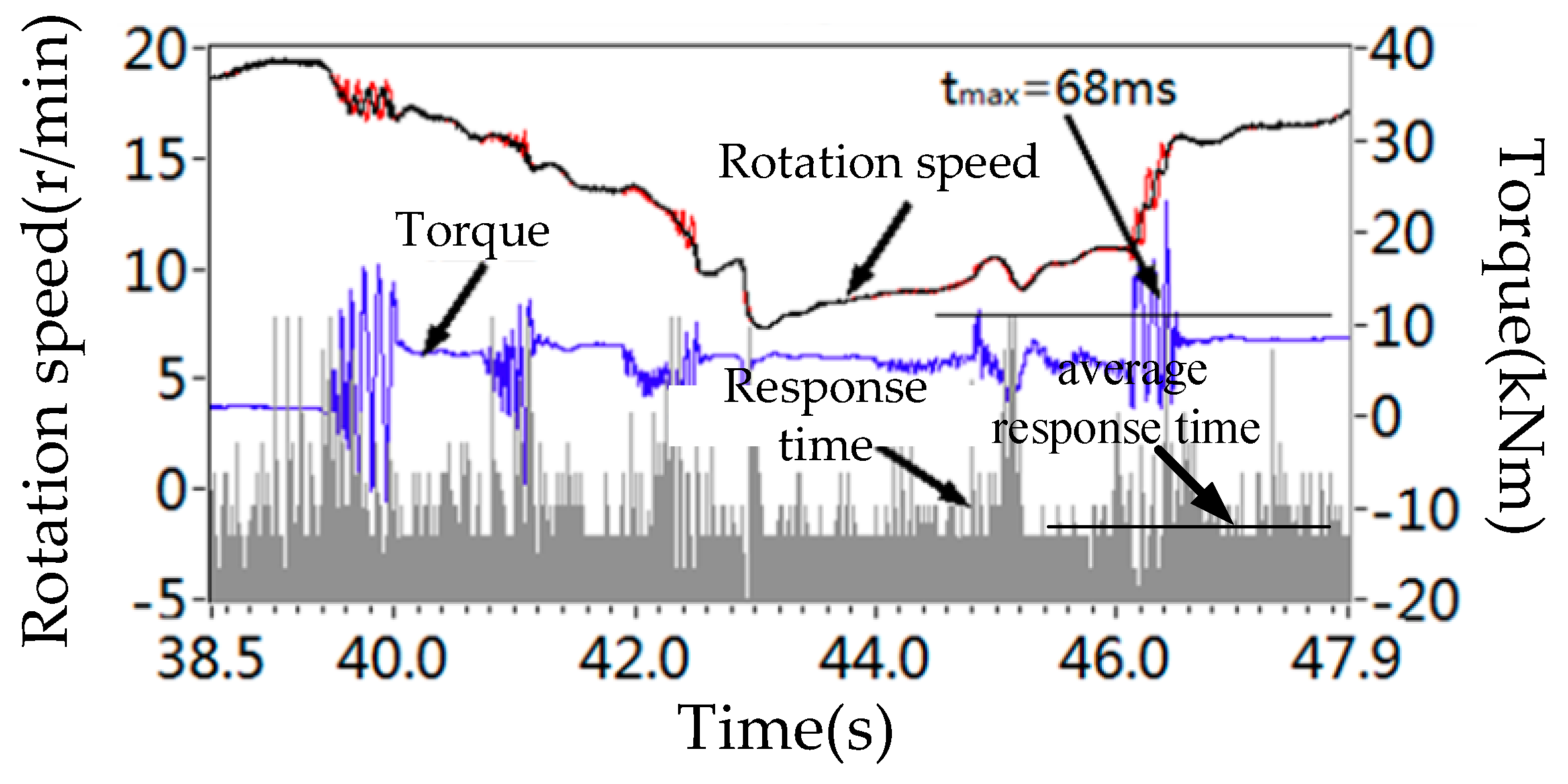

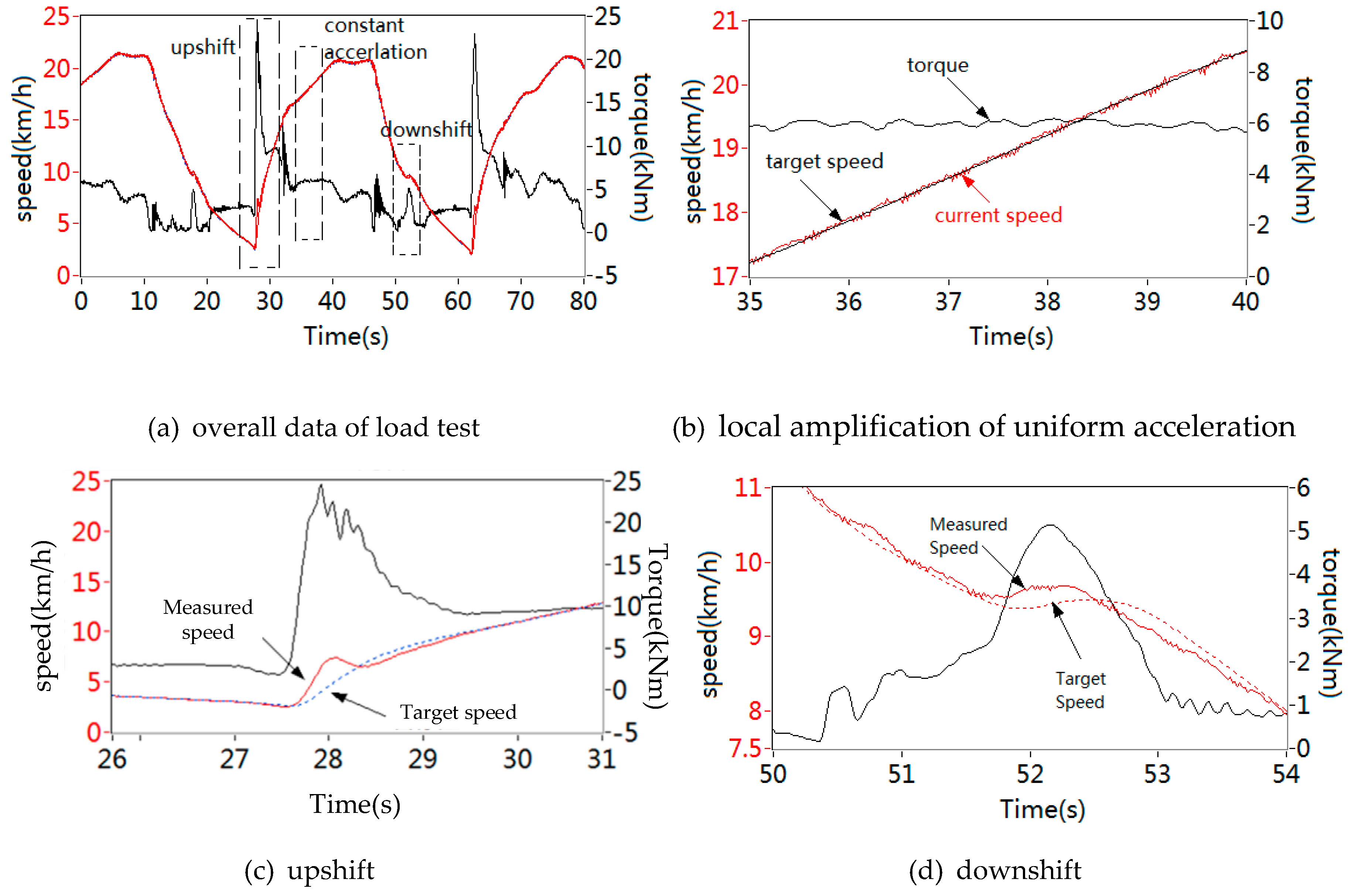
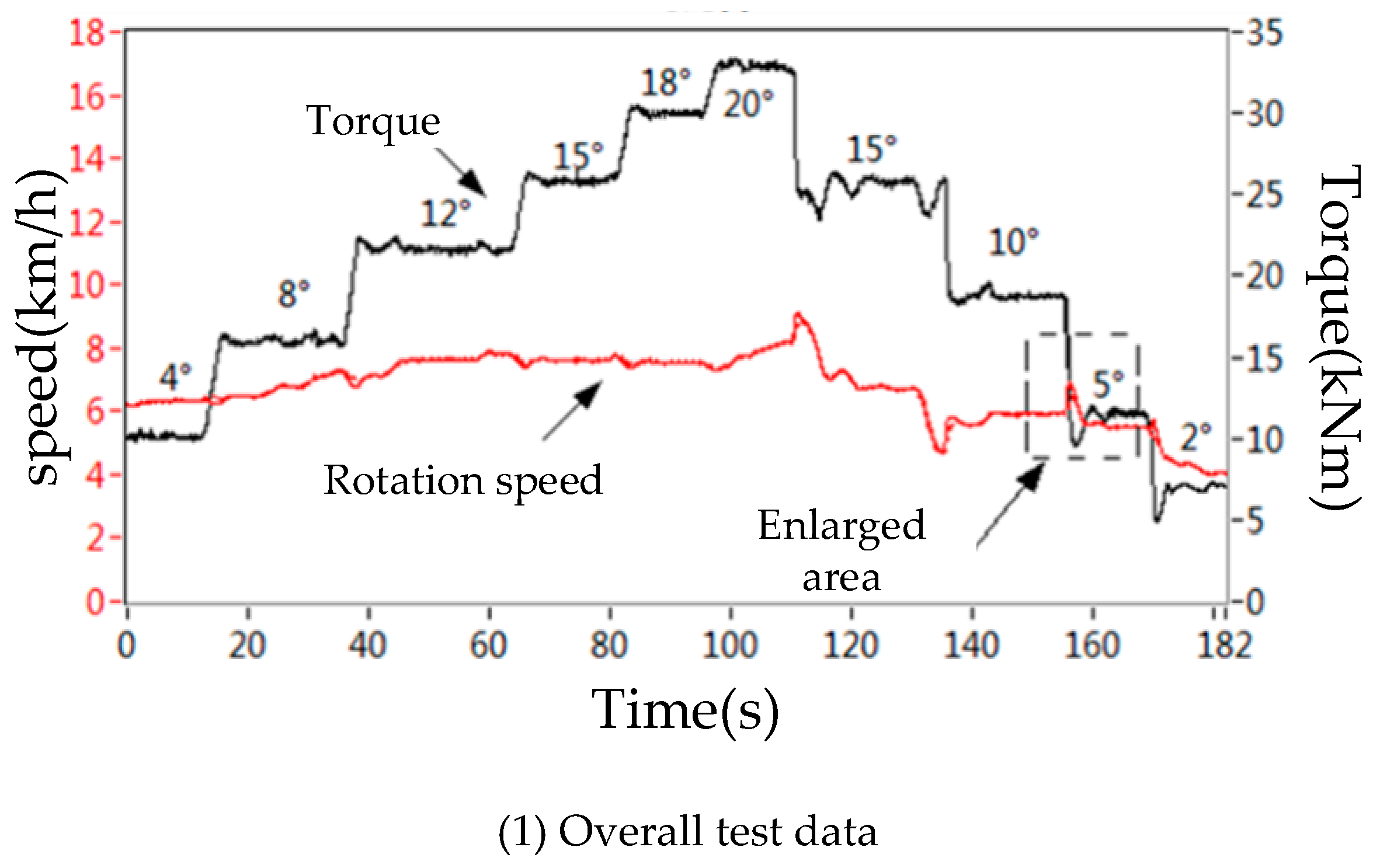
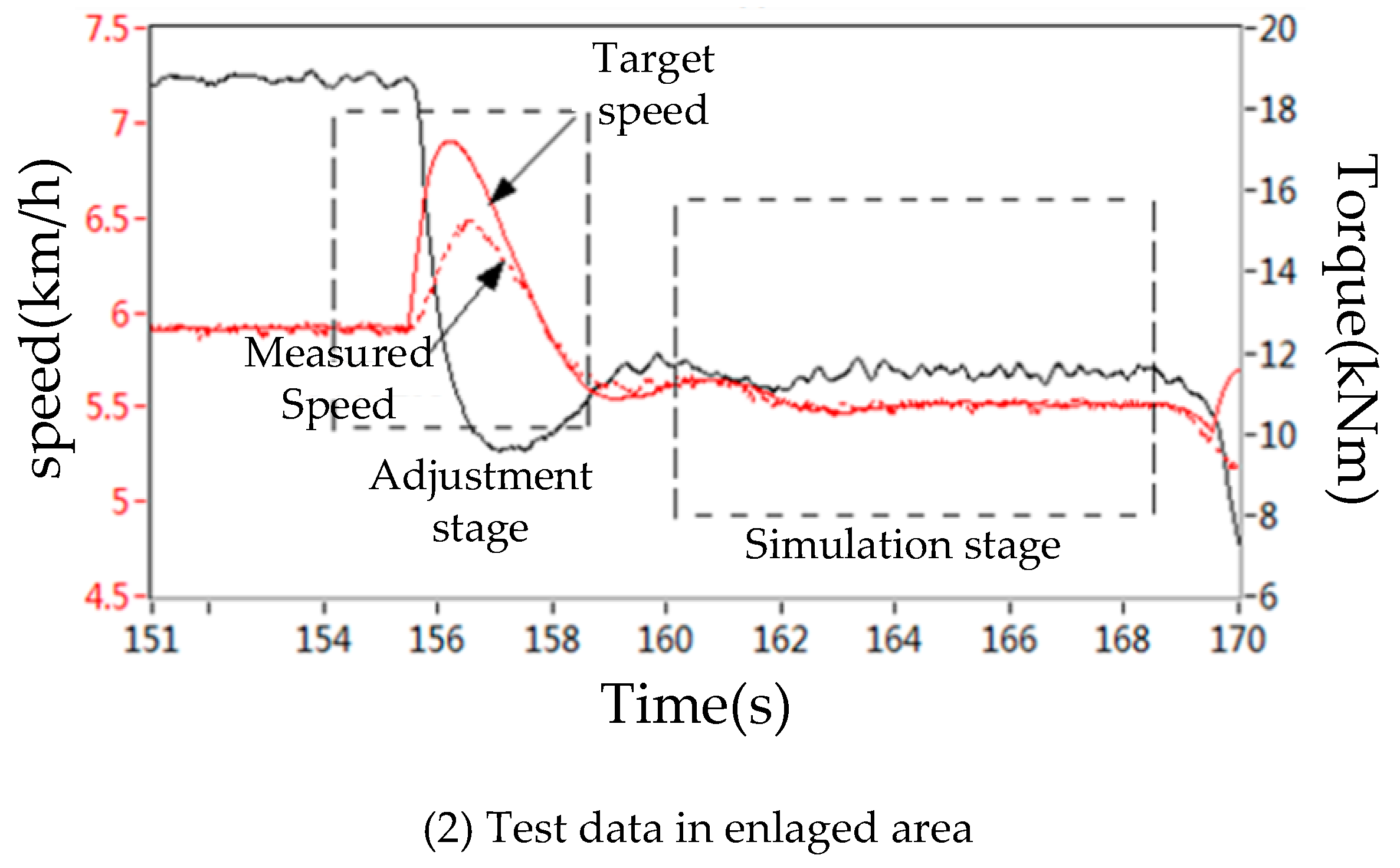

| Before | After | |
|---|---|---|
| Input inertia/kg·m2 | 2703.05 | 2723.6 |
| Angular acceleration/rad·s−2 | 0.61 | 0.538 |
| Theoretical torque/Nm | 5861.01 | 5669.29 |
| Measured torque/Nm | 5804.51 | 5654.23 |
| Deviation | 0.96% | 0.27% |
| Number | Minimum Speed (km/h) | Maximum Speed (km/h) | Acceleration Time (s) | Average Acceleration (m/s2) |
|---|---|---|---|---|
| 1 | 3.32 | 9.08 | 5.15 | 0.31 |
| 2 | 4.65 | 13.52 | 5.93 | 0.41 |
| 3 | 5.85 | 20.21 | 6.84 | 0.58 |
| 4 | 7.10 | 28.92 | 9.00 | 0.67 |
| 5 | 7.84 | 40.99 | 15.26 | 0.61 |
| 6 | 5.46 | 58.85 | 34.85 | 0.43 |
© 2019 by the authors. Licensee MDPI, Basel, Switzerland. This article is an open access article distributed under the terms and conditions of the Creative Commons Attribution (CC BY) license (http://creativecommons.org/licenses/by/4.0/).
Share and Cite
Lv, H.; Zhou, X.; Yang, C.; Wang, Z.; Fu, Y. Research on the Modeling, Control, and Calibration Technology of a Tracked Vehicle Load Simulation Test Bench. Appl. Sci. 2019, 9, 2557. https://doi.org/10.3390/app9122557
Lv H, Zhou X, Yang C, Wang Z, Fu Y. Research on the Modeling, Control, and Calibration Technology of a Tracked Vehicle Load Simulation Test Bench. Applied Sciences. 2019; 9(12):2557. https://doi.org/10.3390/app9122557
Chicago/Turabian StyleLv, Haoliang, Xiaojun Zhou, Chenglong Yang, Zhe Wang, and Yimeng Fu. 2019. "Research on the Modeling, Control, and Calibration Technology of a Tracked Vehicle Load Simulation Test Bench" Applied Sciences 9, no. 12: 2557. https://doi.org/10.3390/app9122557
APA StyleLv, H., Zhou, X., Yang, C., Wang, Z., & Fu, Y. (2019). Research on the Modeling, Control, and Calibration Technology of a Tracked Vehicle Load Simulation Test Bench. Applied Sciences, 9(12), 2557. https://doi.org/10.3390/app9122557





